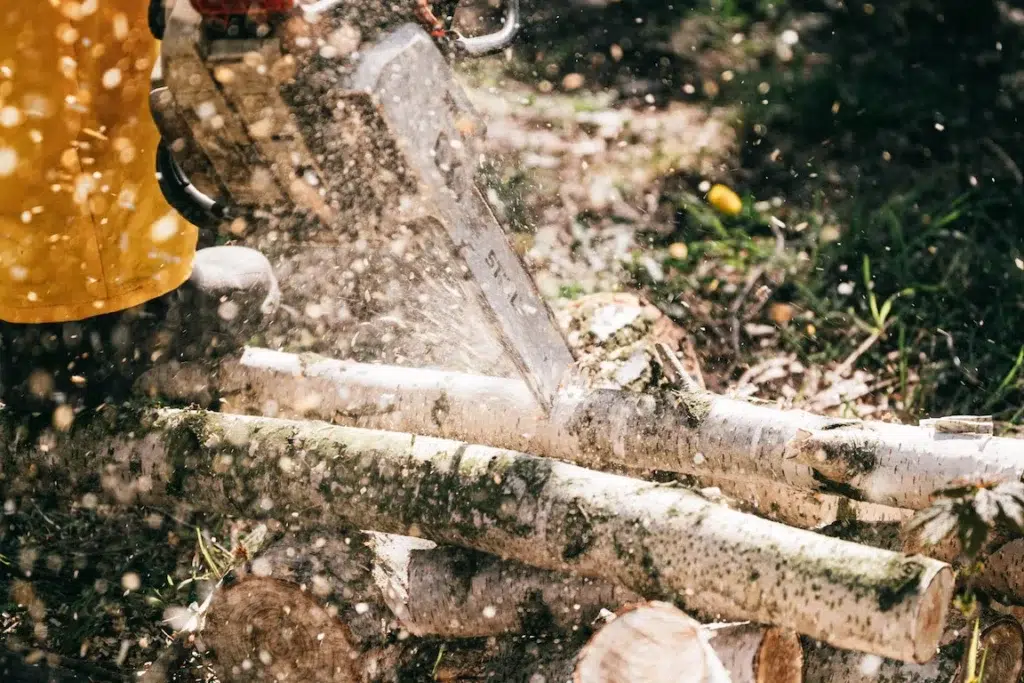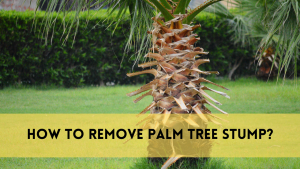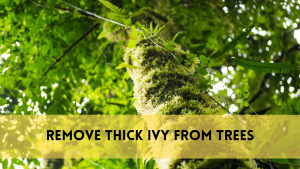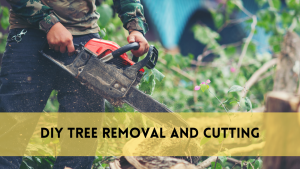Welcome to KingswoodArborist.net, where expert advice meets the frequent challenge encountered by property owners: What To Do With Uprooted Trees:Replant ot Remove. Decisions on uprooted trees demand careful thought in the aftermath of storms or unanticipated occurrences. Our detailed essay navigates the complexity of this issue, providing insights, answers, and professional guidance to allow you to make educated decisions regarding the fate of your trees.At KingswoodArborist.net, we understand both the emotional and practical elements of dealing with uprooted trees. With a combination of firsthand experience and arboricultural skill, we take you through the evaluation process, determining if replanting or removal is the best course of action.
Uprooted Trees: Replant or Remove?
Assessing the Situation: Is Replanting Feasible?
When dealing with uprooted trees, the first critical step is to conduct a thorough examination to establish the viability of replanting. Experts at KingswoodArborist.net advocate a thorough examination that considers many elements impacting the tree’s health, the level of root damage, and the general quality of the soil.
Root Damage Assessment
Begin by looking for damage to the roots. Uprooting can cause severe stress to the root system, necessitating a comprehensive investigation. Look for ripped or severed roots and count their number. According to KingswoodArborist.net, a greater quantity of unbroken roots enhances the probability of successful replanting.
Tree Health Examination
Consider the uprooted tree’s overall health. Examine the trunk, branches, and leaves for damage. Disease symptoms, insect infestations, or pre-existing health difficulties may have an influence on replanting success. According to KingswoodArborist.net, a healthy tree before uprooting has a greater chance of recovery.
Inspection of Soil Conditions
Examine the soil at both the original and prospective new planting locations. The capacity of a tree to grow roots is directly influenced by soil quality. Check for compaction, drainage concerns, and the presence of fertilizers, according to KingswoodArborist.net. Adequate soil conditions are critical for replanting success.
Consideration for the Surrounding Environment
Examine the surrounding surroundings of the uprooted tree. Factors such as solar exposure, wind patterns, and closeness to structures should be considered. KingswoodArborist.net recommends replanting in a site that is as near to the natural habitat of the tree as feasible.
Consultation with a Licensed Arborist
KingswoodArborist.net suggests speaking with a qualified arborist for an in-depth examination. Based on their understanding of tree biology, local climate conditions, and horticulture methods, these experts can access the overall feasibility of replanting.
The Art of Tree Removal: When Is It Necessary?
Navigating the issue of whether to remove an uprooted tree needs a comprehensive awareness of numerous aspects. KingswoodArborist.net offers expert advice on whether tree removal is required, stressing safety, environmental concerns, and the general well-being of your property.
Structural Damage Assessment
The level of structural damage incurred during uprooting is an important indicator for tree removal. KingswoodArborist.net recommends thoroughly evaluating the trunk and key branches for cracks, splits, or serious abnormalities. If the structural integrity is jeopardized, removal may be the best solution.
Root System Compromise
Examine the root system’s health. If a significant section of the roots are injured or cut during uprooting, the tree’s capacity to anchor and support itself is jeopardized. KingswoodArborist.net cautions that serious root damage may need removal.
Structures in Close Proximity
Consider how close the uprooted tree is to structures such as homes, buildings, or power lines. KingswoodArborist.net recommends tree removal if the tree is at risk of falling on structures, endangering people’s safety, or causing property damage.
Pest or disease infestations
Trees that are already suffering from health issues, such as disease or insect infestations, may not recover well after being uprooted. KingswoodArborist.net advocates removal in such circumstances to avoid the spread of diseases or pests to other neighbouring trees.
Environmental Affect
Consider the environmental implications of keeping the removed tree in situ. If the tree is in a situation where it might harm other plants or disrupt the ecosystem, KingswoodArborist.net recommends removal to ensure the general health of the environment.
Professional Arborist Consultation
KingswoodArborist.net suggests contact with a professional arborist for a comprehensive examination. These professionals have the skills to examine the individual conditions surrounding the uprooted tree and can provide educated advice on whether removal is required.
Safety precautions
When deciding on tree removal, prioritize safety. If the uprooted tree poses an immediate threat owing to its location or condition, rapid removal is critical. KingswoodArborist.net highlights the necessity of taking preventative actions to reduce dangers.
Replanting: Best Practices for Success
Choosing the Right Location
Choose a replanting place that is similar to the original habitat of the tree. For a smooth transition, KingswoodArborist.net suggests taking into account sunshine exposure, soil quality, and proximity to structures.
Proper Hole Preparation
Make a planting hole that is large enough to accommodate the tree’s root system. KingswoodArborist.net promotes adequate breadth and depth in order for roots to propagate and establish themselves properly.
Gentle Handling of Roots
Gently handle the tree’s roots throughout the transplanting procedure. KingswoodArborist.net advises avoiding needless root injury to ensure root integrity and effective adaptation.
Watering Procedures
Set up a consistent watering routine to help the tree get started. KingswoodArborist.net emphasizes the significance of delivering adequate moisture while avoiding waterlogging.
Moisture Retention Through Mulching
Mulch the tree’s base to conserve moisture and manage soil temperature. Mulching is recommended by KingswoodArborist.net as a good technique for the tree’s general health.
Tree Removal: Professional Services for Safety and Efficiency
When it comes to tree removal, hiring a professional is essential for guaranteeing safety and efficiency. Arborists play a key part in the process, combining knowledge and specific techniques to handle tree removal with accuracy, according to KingswoodArborist.net.
Risk Analysis and Planning
KingswoodArborist.net’s professional arborists begin the tree removal procedure by conducting a complete risk assessment. This entails assessing possible dangers, such as neighbouring structures or utility lines, and devising a methodical removal strategy to reduce risks.
Specialized Tools and Techniques
Arborists bring specific equipment and skills to the table, ensuring that trees are removed efficiently. KingswoodArborist.net’s professionals use cutting-edge techniques to carefully remove trees while minimizing the damage on the surrounding environment.
Security Procedures
During tree removal, safety comes first. Arborists at KingswoodArborist.net follow strict safety practices, wearing personal protection equipment and taking precautions to protect both property and staff.
FAQS
How do I know whether my uprooted tree can be rescued by replanting?
KingswoodArborist.net suggests looking for unbroken roots, analyzing overall tree health, and consulting with a trained arborist for a comprehensive inspection.
Are certain tree species more resistant to uprooting?
While certain species may be more resilient than others, KingswoodArborist.net advises that any uprooted tree, regardless of species, should be thoroughly evaluated.
Is tree shock treatable, or is removal the only option?
Tree shock may be avoided with adequate care and monitoring. KingswoodArborist.net recommends speaking with an arborist to decide the best course of action.
Is self-replanting a realistic solution for small uprooted trees?
DIY replanting for tiny trees is possible with correct assistance from KingswoodArborist.net. However, bigger trees may want expert aid.
How soon should I address an uprooted tree to increase its chances of survival?
Prompt action is essential. KingswoodArborist.net advocates identifying and treating uprooted trees as soon as possible to improve the chances of effective recovery.
Conclusion
KingswoodArborist.net can help you decide whether to replant or remove uprooted trees. Our experienced advice enables you to make decisions that are in line with the health of your trees and the safety of your surroundings. Whether you choose replanting or removal, our dedication to excellence guarantees that your tree-related difficulties are solved with knowledgeable and practical solutions.
How useful was this post?
Click on a star to rate it!
Average rating 0 / 5. Vote count: 0
No votes so far! Be the first to rate this post.




